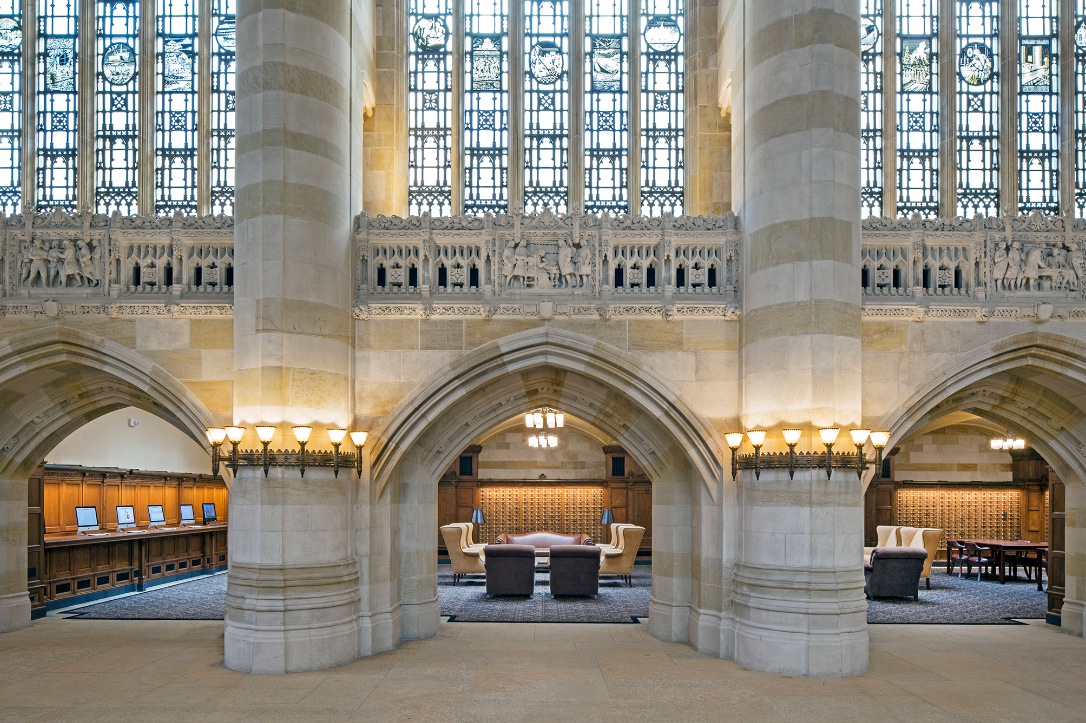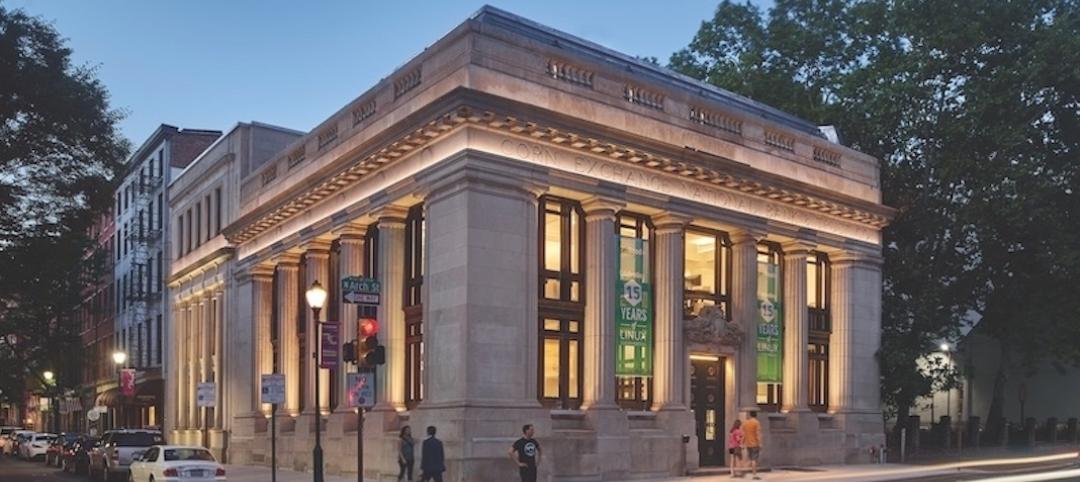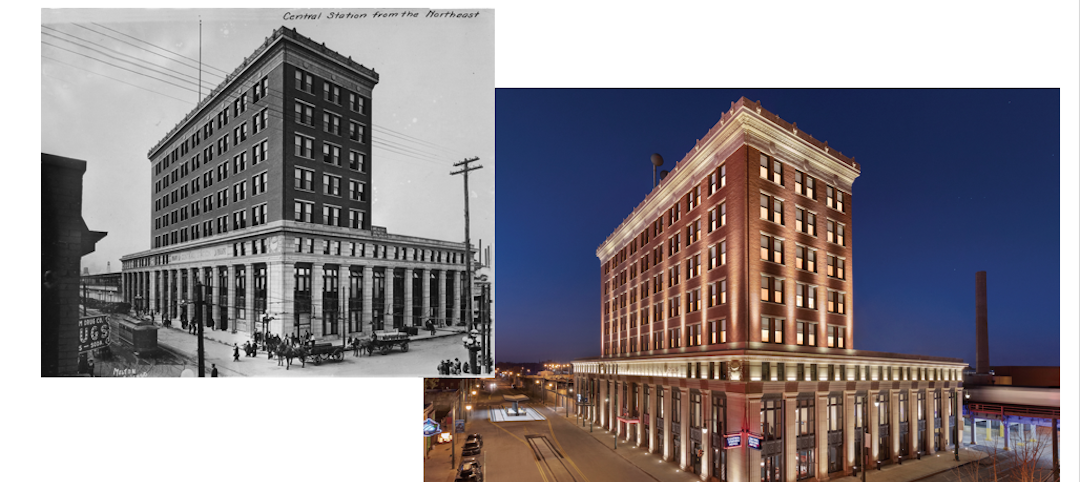When Yale University’s Sterling Library, designed by James Gamble Rogers (Class of 1889), opened in 1931, it was clear that the Collegiate Gothic structure had fulfilled the architect’s vision of a “temple of learning and a cathedral of knowledge.” The quasi-religious experience began right at the main entrance, the 150-foot-long nave, which was embellished with stained glass windows by G. Owen Bonawit, stone carvings by René P. Chambellan, and decorative ironwork by Samuel Yellin.
Four years ago, the university determined that the nave had suffered considerable deterioration and needed to be restored to its original condition. A Building Team led by Turner Construction Company and Helpern Architects was given a strict set of mandates: Make the new nave indistinguishable from the old. Take nothing away from the historic character of the original masonry, metal, finishes, painted surfaces, and stained glass. Improve library operations and update its technology to accommodate Sterling’s physical and digital collections.
SILVER AWARD
Sterling Memorial Library, Yale University New Haven, Conn.
Building Team
Submitting firms: Turner Construction Company (CM); Helpern Architects (architect)
Owner: Yale University
SE: Robert Silman Associates
MEP engineer: AKF Group
Acoustics/AV: Jaffe HoldenGeneral Information
Size: 13,000 sf
Construction cost: $13.5 million
Construction time: June 2013 to August 2014
Delivery method: CM at risk
These tasks were complicated by the further requirement to modernize the nave’s MEP systems—upgrading the lighting to current standards, inserting air-conditioning, concealing the fire alarm system, etc. This had to be accomplished without disturbing the load-bearing stone walls, piers, and columns, which offered no room to incorporate pipes, conduit, and other key infrastructure.
Without any existing cavity wall or chase wall spaces in which to route new mechanical services, the Building Team had to figure out how to jam in critical infrastructure anywhere it could while preserving the existing architectural elements.
Early in the design phase, Turner suggested moving the proposed new mechanical room from its original position in the library stack to unused attic space. The CM hung an aluminum catwalk system from the wood roof framing and created a temporary opening in the stone façade just large enough to fit the air-handling unit. Mechanical piping was installed by opening the roof and craning new risers in from above, the risers running the full length of the shaft.
The last piece of the MEP puzzle had to do with the new fan coil units. Millwork subcontractor CW Keller & Associates created a system of hidden doors within the existing millwork that concealed the fan coil units while maintaining the historic appearance of the card catalog fixtures.
With the MEP matter behind them, the Building Team attacked the remaining problems. Femenella & Associates, working with Helpern Architects, restored the Bonawit stained glass windows. Kugler Ning Lighting Design installed new LED lighting to brighten the interior. The architect reorganized the functions of the three service desks into a single unit, created small meeting spaces in the nave’s north aisle, and reconfigured the circulation desk for easier entry to the stacks.
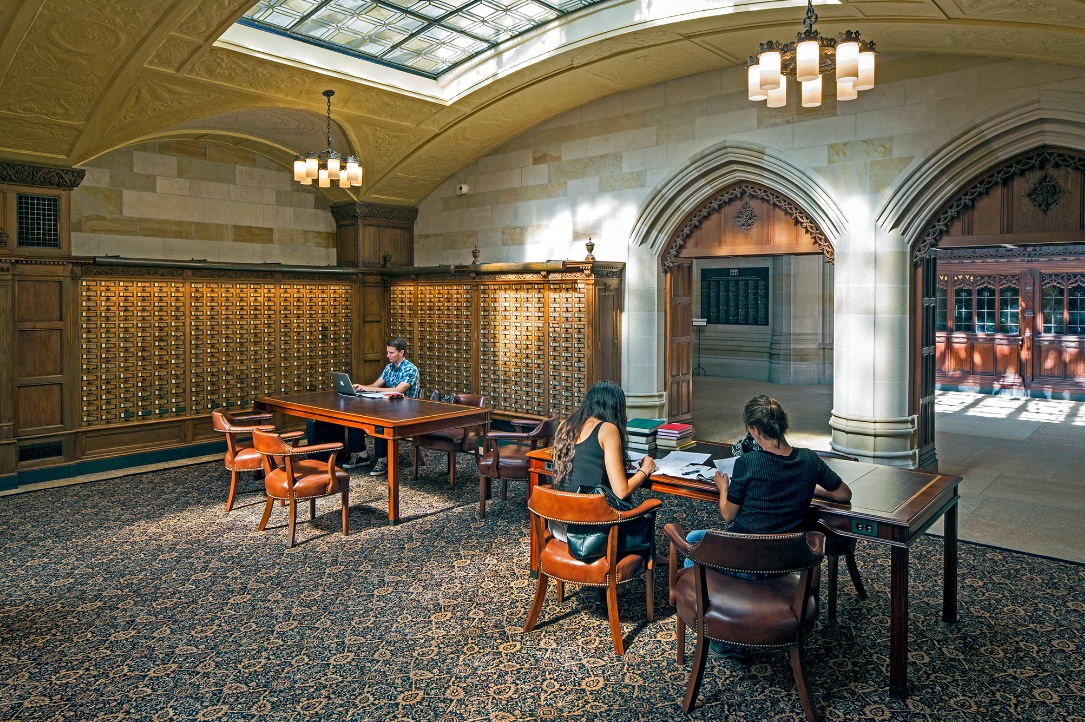 Sterling Memorial Library, originally designed by Yale alumnus James Gamble Rogers, opened in 1931. The Alma Mater mural rises at the end of the 150-foot-long nave (below). Twenty-seven original stained glass windows by G. Owen Bonawit in the nave were restored. Photos: Brian Rose.
Sterling Memorial Library, originally designed by Yale alumnus James Gamble Rogers, opened in 1931. The Alma Mater mural rises at the end of the 150-foot-long nave (below). Twenty-seven original stained glass windows by G. Owen Bonawit in the nave were restored. Photos: Brian Rose.
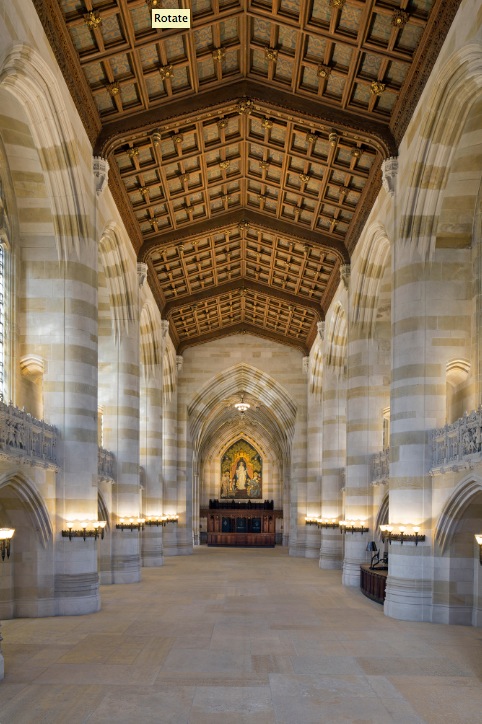
Related Stories
Government Buildings | Jan 9, 2023
Blackstone, Starwood among real estate giants urging President Biden to repurpose unused federal office space for housing
The Real Estate Roundtable, a group including major real estate firms such as Brookfield Properties, Blackstone, Empire State Realty Trust, Starwood Capital, as well as multiple major banks and CRE professional organizations, recently sent a letter to President Joe Biden on the implications of remote work within the federal government.
Giants 400 | Aug 11, 2021
BD+C Awards Programs
Entry information and past winners for Building Design+Construction's two major awards programs: 40 Under 40 and Giants 400
Reconstruction Awards | Mar 12, 2021
Call for entries: 2021 Reconstruction Awards
The 2021 Reconstruction Awards recognize the best reconstructed, renovated, or remodeled projects, based on overall design, engineering, and construction project quality. Entries are due July 16, 2021.
Reconstruction Awards | Mar 12, 2021
2021 Reconstruction Awards Entry Information
Only projects completed or occupied between January 1, 2020 and July 16, 2021 are eligible.
Reconstruction Awards | Mar 12, 2021
2021 Reconstruction Awards 'How to Win' Tip Sheet
Keep this tip sheet handy when preparing your Reconstruction Awards entry, as these are some items on which your project will be judged.
Reconstruction Awards | Feb 5, 2021
The historic Maryland Theatre is reborn in Hagerstown
The Maryland Theatre project has won a Bronze Award in BD+C's 2020 Reconstruction Awards.
Reconstruction Awards | Jan 30, 2021
Repositioning of historic Sears Roebuck warehouse enlivens Boston’s Fenway neighborhood
Developer Samuels & Associates asked Elkus Manfredi Architects to reimagine the former Sears Roebuck & Co. warehouse in Boston’s Fenway neighborhood as a dynamic mixed-use destination that complements the high-energy Fenway neighborhood while honoring the building’s historical significance.


